#Akan
Text

Ashanti Akan man, Ghana, by Carol Beckwith and Angela Fisher
#ashanti#akan#ghana#africa#western africa#folk clothing#traditional clothing#traditional fashion#cultural clothing
202 notes
·
View notes
Photo
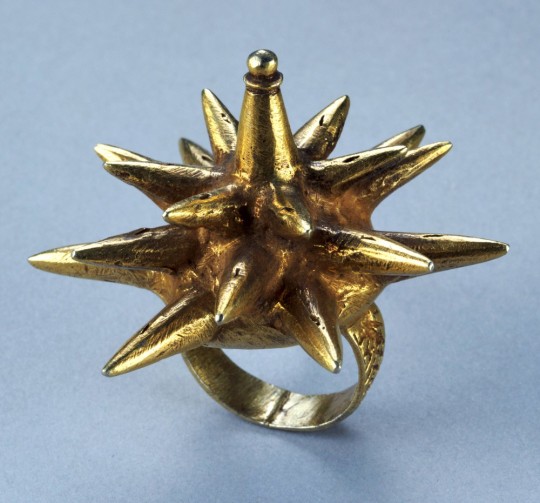
Akan artist, Ghana, Western Africa, Finger or toe ring (mpɛtea) in the form of a starburst or cocoon. Gold, 5.5 x 6.3 cm; 2.3 cm (ring diameter). Bequest of John B. Elliott, Class of 1951 (1998-639)
https://artmuseum.princeton.edu/collections/objects/36886
3K notes
·
View notes
Text

🔥Demon Kyojuro🔥
#kyojuro rengoku#rengoku#rengoku kyojuro#demon rengoku#demon slayer#kimetsu no yaiba#kny#my art#kimetsu fanart#demon slayer fanart#kny fanart#akan#renkaza
955 notes
·
View notes
Text
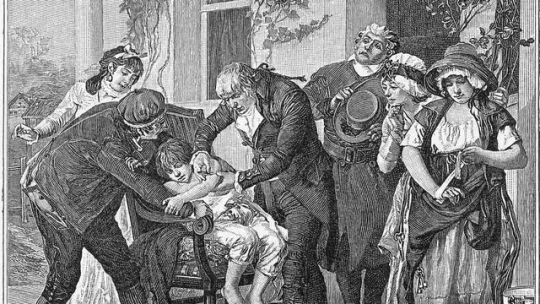
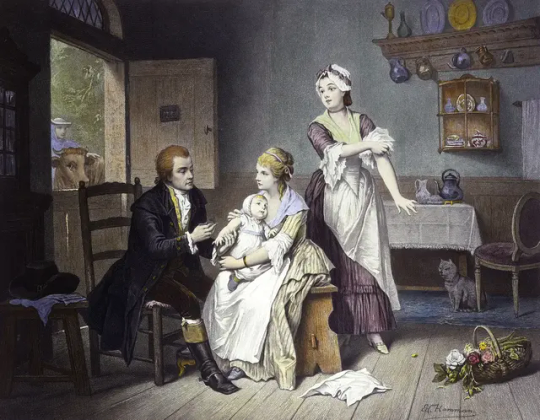


Onesimus (late 1600s–1700s) was an African man who was instrumental in the mitigation of the impact of a smallpox outbreak in Boston, Massachusetts. His birth name is unknown. He was enslaved and, in 1706, was given to the New England Puritan minister Cotton Mather, who renamed him. Onesimus introduced Mather to the principle and procedure of the variolation method of inoculation to prevent the disease, which laid the foundation for the development of vaccines. After a smallpox outbreak began in Boston in 1721, Mather used this knowledge to advocate for inoculation in the population. This practice eventually spread to other colonies. In a 2016 Boston magazine survey, Onesimus was declared one of the "Best Bostonians of All Time"
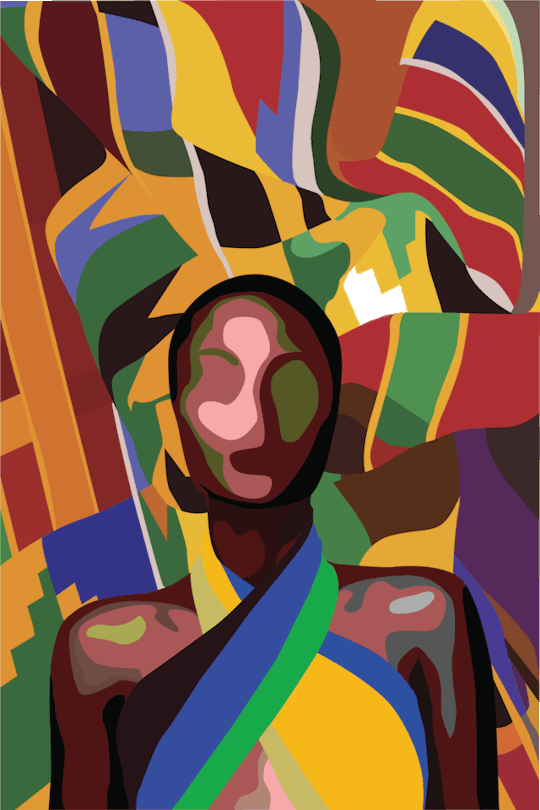
Onesimus's name at birth and place of birth are unknown with certainty. He was first documented as living in the colonies in 1706, having been brought to North America as an enslaved person. In December of that year, he was given as a gift by a church congregation to Cotton Mather, their Puritan minister of North Church, as well as a prominent figure in the Salem Witch Trials. Mather renamed him after a first-century AD enslaved person mentioned in the Bible.The name, "Onesimus" means "useful, helpful, or profitable".
Mather referred to the ethnicity of Onesimus as "Guaramantee", which may refer to the Coromantee (also known as Akan people of modern Ghana).
Mather saw Onesimus as highly intelligent and educated him in reading and writing with the Mather family (for context, according to biographer Kathryn Koo, at that time, literacy was primarily associated with religious instruction, and writing as means of note-taking and conducting business)

In 1716 or shortly before, Onesimus had described to Mather the process of inoculation that had been performed on him and others in his society in Africa (as Mather reported in a letter): "People take Juice of Small-Pox; and Cut the Skin, and put in a drop." In the book, African Medical Knowledge, the Plain Style, and Satire in the 1721 Boston Inoculation Controversy, Kelly Wisecup wrote that Onesimus is believed to have been inoculated at some point before being sold into slavery or during the slave trade, as he most likely traveled from the West Indies to Boston.

The variolation method of inoculation was long practiced in Africa among African people.
The practice was widespread among enslaved colonial people from many regions of Africa and, throughout the slave trade in the Americas, slave communities continued the practice of inoculation despite regional origin.
Mather followed Onesimus's medicinal advice because, as Margot Minardi writes, "inferiority had not yet been indelibly written onto the bodies of Africans."

#african#afrakan#kemetic dreams#africans#brownskin#brown skin#afrakans#african culture#afrakan spirituality#smallpox#vodun#obeah#margot minardi#ghana#akan#Salem Witch Trials#smallpox outbreak in Boston#Massachusetts.#Coromantee#puritans
94 notes
·
View notes
Quote
I sleep long and soundly,
Suddenly the door creaks,
Confused, I open my eyes,
And find my love standing there:
What matters death to me?
Akan (Ghana), translated from the Akan by J. H. Kwabena Nketia
420 notes
·
View notes
Text

Afena saber of the Akan people, from the Agnibilékrou region of present-day Côte d'Ivoire. First half of 20th century. Now in the National Museum of African Art, Washington, D.C. Photo credit: Ji-Elle/Wikimedia Commons.
#art#art history#Africa#African#African art#West Africa#West African#West African art#Cote d'Ivoire#Ivory Coast#artifacts#sword#saber#Akan#Akan people#metalwork#historical weaponry#20th century art#National Museum of African Art
123 notes
·
View notes
Text

plotting out scar location etc etc
5 notes
·
View notes
Text
WEST AFRICAN RESOURCES
The Anthropological Masterlist is HERE.
West African is an African region that spans the western part of the continent.
AGNIS ─ “The Agnis, or Anyi, people are an African people. They are native to the Ivory Coast.”
─ Anyi Information
AKAN ─ “The Akan people are an African people. They are native to Ghana and the Ivory Coast.”
─ Pre-Colonial History of Ghana
─ Modern-Day Akan
─ Akan Dictionary
ANNANG ─ “The Annang, or Anaang, people are an African people. They are native to southern Nigeria.”
─ Annang Dictionary
ASHANTI ─ “The Ashanti, or Asante, people are an African people. They are native to the Ashanti region in Ghana.”
─ Ashanti Information
─ Ashanti Culture
─ Ashanti History
BAMBARA ─ “The Bambara people are an African people. They are native to West Africa.”
─ Bambara Art
─ Bambara Language (in French)
BASSARI ─ “The Bassari people are an African people. They are native to the Kédougou region of Senegal.”
─ Bassari Language (in French)
EWE ─ “The Ewe people are an African people. They are native to the coastal areas of West Africa.”
─ Ewe Information
─ The Anlo-Ewe People
─ The Adze in Ewe Mythology
FON ─ “The Fon, or Dahomey, people are an African people. They are native to south Benin and southwest Togo and Nigeria.”
─ The Dahomey Amazons
IBIBIO ─ “The Ibibio people are an African people. They are native to the coasts of southern Nigeria.”
─ Ibibio Language Resources
─ Ibibio Masks
IGBO ─ "The Igbo, or Ibo, people are an African people. They are native to Nigeria.”
─ Igbo Culture
─ Igbo Dictionary
ISOKO ─ “The Isoko people are an African people. They are native to the Isoko region in Nigeria.”
─ Isoko Information
─ Isoko Culture and History
─ Isoko Dictionary
KONGO ─ “The Kongo people are an African people. They are native to the Atlantic coast of central Africa.”
─ Kongo Language Resources
─ Kongo Dictionary
KONO ─ “The Kono people are an African people. They are native to the Kono District in eastern Sierra Leone.”
─ Kono Culture and Rituals
NIGERIAN ─ “The Nigerian people are an African people that share the Nigerian culture. They are native to Nigeria.”
─ Nigerian Information
─ Colonial Nigeria
SERER ─ “The Serer, or Seereer, people are an African people. They are native to Senegal.”
─ Serer Information
─ Serer Language
TALLENSI ─ “The Tallensi, or Talensi, people are an African people. They are native to northern Ghana.”
─ Tallensi Culture
─ Tallensi Development and Culture
URHOBO ─ “The Urhobo people are an African people. They are native to the Niger Delta in Nigeria.”
─ Ughelli Kingdom Information
─ Urhobo Dictionary
VODUN ─ “Vodun, or Vodon, is a West African religion. It originates in West Africa.”
─ Christians and Vodun
YORUBA ─ “Yoruba, or Isese, is a West African religion. It originates in southwestern Nigeria.”
─ The Yoruba People
─ Yoruba Culture (in Spanish)
─ Yoruba Mythology
#resources#agnis#akan#annang#ashanti#bambara#bassari#ewe#fon#ibibio#igbo#isoko#kongo#kono#nigerian#serer#tallensi#vodun#yoruba#west african
119 notes
·
View notes
Text
Help me pick a new name :)
I think it's time to move on from the handle Inkd Eyes. Not that I don't like it anymore - but I'm not sure of it. I wanted to incorporate my father's language so I've picked some names in relation to me and words or phrases that I think might be nice then had friends pick which ones were the most readable to them or enjoyable. Here are the options.
(I know some may not be grammatically correct, or sound silly, but we're all a bit silly, aren't we? I most likely wouldn't use full phrases as they can get long)
You can suggest names or put an "other" option in the tags too :)
Actual names
Name meaning second born
Mǎnu (male)
Máanu (female)
Name meaning "Born on thursday"
Yaw (male)
Yaa (female)
(variants) Yao, Yawo, Yawu, Yawa, Ayawa, Kwaw, Ekow, Kow;
Yaa, Yaaba, Yaba, Aaba, Abina
Name meaning "Premature, sickly"
Nyaméama
Words and Phrases
nkanyan (revival)
kusuu or tumm (gloom, dark)
kabii (dark)
esum (darkness)
bɔne (sin, darkness)
owuo (death)
nkwa ne owuo (life and death)
ɛnna (tomb)
afunsie (burial)
nkaedeɛ (memorial)
esum mu (in the darkness)
Awo foforo a ɛyɛ sum (A dark rebirth)
Esum mu awo foforo ( A new birth of darkenss)
Anadwo ho dɔ (love of the night)
Anadwo (night)
anadwo no nkanyan (The awakening of the night)
daeɛ (dream)
adaeso mu (in the dream)
adaeso ahorow (dreams of dreams)
ɔdɔ mu yaw (the pain of love)
esum a ɛyɛ mmerɛw (soft darkness)
esum a ɛyɛ dɛ (a sweet darkness)
6 notes
·
View notes
Photo


Luben/Lyuben and Akan (LustCharged, X-Charged). Figured these two needed an update of some kind (I don’t think I’ve even posted Akan here before!) so here’s what they look like now!
#UnderCharged AU#art#Undertale AU#Lust sans#Cross Sans#LustCharged#X-Charged#Luben/Lyuben#Akan#Underlust#X-tale#Luben's lesser used due to Lusttale-related controversies#Unfortunate that I feel like I step on eggshells when using the character...#Because I genuinely love his design#and that aside from the sassy flamboyant part he's quite different from most interpretations of Lust#y'know?
35 notes
·
View notes
Text

Nzema Akan woman, Ivory Coast, by Joana Choumali
#nzema#akan#ivory coast#africa#folk clothing#traditional clothing#traditional fashion#cultural clothing#western africa
543 notes
·
View notes
Photo

Akan Chief: Solid Gold Glasses
Akan chief from Ivory Coast wearing solid gold ceremonial glasses during traditional ceremonies in Dabou.
African Kings by Daniel LAINÉ
(via https://www.flickr.com/photos/sondolo/)
161 notes
·
View notes
Text


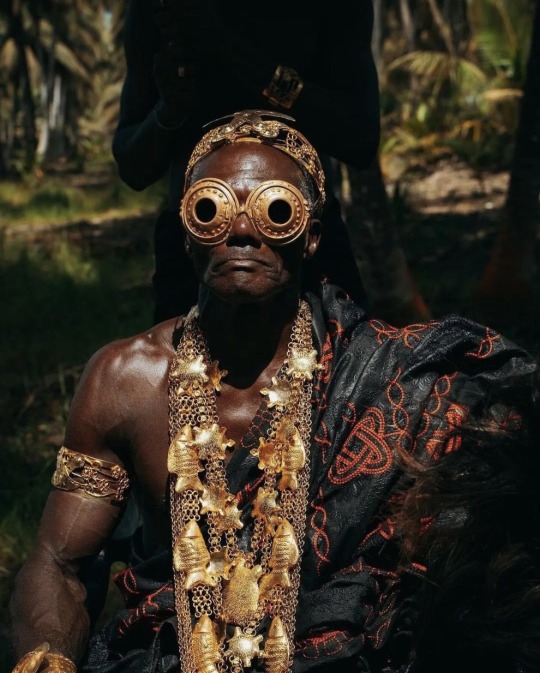

“Gold With A Mind of Its Own”, a photographic series by Nigerian-Guyanese filmmaker and photographer Chelsea Odufu
She explores the relationship that the Akan people of Côte d'Ivoire share with gold—a metal with rich spiritual & socio-political associations
#african photography#african photographer#women photographers#photography#nigeria#guyana#côte d’ivoire#chelsea odufu
4 notes
·
View notes
Text
Junkanoo is a street parade with music, dance, and costumes with origin in many islands across the English speaking Caribbean every Boxing Day (26 December) and New Year's Day (1 January). These cultural parades are predominantly showcased in the Bahamas where the music is also mainstreamed, and competition results are hotly contested, There are also Junkanoo parades in Miami in June and Key West in October, where local black populations have their roots in the Caribbean. In addition to being a culture dance for the Garifuna people, this type of dancing is also performed in The Bahamas on Independence day and other historical holidays. Historically, Junkanoo parades were also found in Southeastern North Carolina.
However, the custom became less popular after slavery was abolished. The last known Jonkonnu celebration in the Southern United States was in Wilmington, N.C., in the late 1880s.
The festival may have originated several centuries ago, when enslaved descendants of Africans on plantations in The Bahamas celebrated holidays granted around Christmas time with dance, music, and costumes. After emancipation the tradition continued and junkanoo evolved from simple origins to a formal, organised parade with intricate costumes, themed music and official prizes within various categories.
The origin of the word junkanoo is disputed. Theories include that it is named after a folk hero named John Canoe or that it is derived from the French gens inconnus (unknown people), as masks are worn by the revelers.
According to Edward Long, an 18th-century Jamaican slave owner/historian, the John Canoe festival was created in Jamaica and the Caribbean by enslaved Akans who backed the man known as John Canoe. Canoe, an Ahanta from Axim, Ghana, was an ally soldier for the Germans, until one day he turned his back on them for his Ahanta people and sided with Nzima and troops in order to take the area from the Germans and other Europeans. The news of his victory reached Jamaica and he has been celebrated ever since that Christmas of 1708 when he first defeated Prussic forces for Axim. Twenty years later his stronghold was broken by neighbouring Fante forces aided by the military might of the British.
Ahanta, Nzima and Fante captives were taken to Jamaica as prisoners of war. The festival itself included motifs from battles typical of Akan fashion. The many war masks and war dance formations of Ahanta people became part of this celebration the world over, especially in the Caribbean. The elaborate masks and attire resemble Akan battledress with charms, referred to as a "Batakari".

Djékanou is a town in central Ivory Coast. right in the middle of the Akan population of that country. It is a sub-prefecture of and the seat of Djékanou Department in Bélier Region, Lacs District. Djékanou is also a commune
#junkanoo#african#afrakan#akan#igbo#yoruba#caribbean#kemetic dreams#brownskin#afrakans#africans#brown skin#african culture#deep reddish brown skin#epic video
188 notes
·
View notes
Text
West African Clothing, Shoes, and Accs I Would Like Made into Sims 4 CC
More clothing that I will add to the Medieval Around the World theme for Sims 4 CC: Ashanti and Ewe Kente cloth.
The traditional style to wear the cloth for men is similar (not the same) as how ancient Greek men wore their himation.



#sims 4 cc suggestions#african clothing#historical clothing#traditional clothing#ghana#west africa#kente cloth#kente print#kente patterns#akan#akan peoples#dagbon#ewe#ashanti#ghanian clothing#not twilight
35 notes
·
View notes
Text
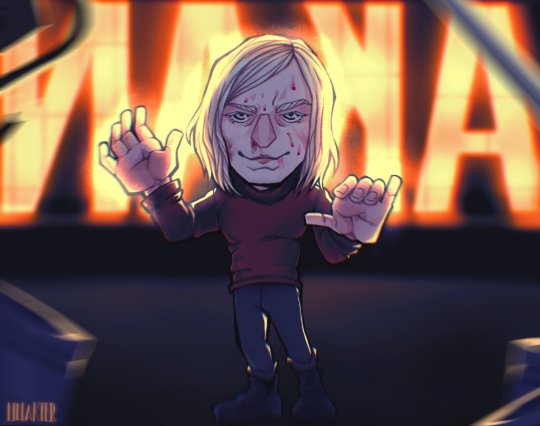
Chibi Akan commission for my friend Tel, got me to finally check out Hardcore Henry, soooo fucking fun
6 notes
·
View notes